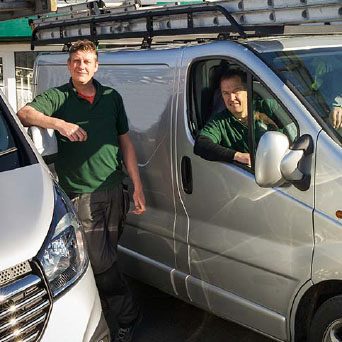Marian Taggart-Holland’s article which was featured in Digital Image Magazine’s Oct/Nov 2014 edition.
—
Watching a recent episode of MasterChef, I was fascinated by a challenge in which teams were to set up shop at the Melbourne Queen Vic markets and sell their meals.Teams were given seven hundred dollars each, and the team that finished the night with the most money in the till would be the winner. Pretty simple.
One team figured that if they spent less of their start-up cash they would be ahead of the game before they even started, with cash already in their till. Another adopted the strategy of spending every cent on the raw materials and making as much food as they possibly could. That team also decided to focus on cooking only one product well, to make lots of it and to spruik hard. No guesses who won the comp. Not only did the latter team win, they made nearly three times more money as the first team.
As simplistic as it may seem, the principle can be applied to any business. One must spend money to make money after all. This also relates to the upgrading and maintenance of equipment and technology utilised in the delivery of products and services.
Access to income generating equipment is vital
Capital equipment and technology are essential tools in the graphics, signage and print industries. For many businesses, the equipment itself is the engine of the business. The most successful businesses we see are those whose owners keep up to date with the latest industry trends, products and equipment and have an internal equipment upgrade policy. This may be as simple as setting specific finance or leasing periods for each item of equipment, and adopting as usual practice an upgrade at the end of that term.
For these owners, it’s the way they keep their business running smoothly. Staff can do their jobs with minimal frustration, greater creativity and satisfaction, customer requirements are met and hopefully exceeded, and goods and services are produced at a profit! Happy Days.
So when is the best time to upgrade? being proactive vs reactive
The reactive business considers the time to upgrade equipment is based on the condition of the existing equipment. Does is it fire up when the start button is pushed?
The proactive business tends to make decisions based on advancements in technology and maintaining business competitiveness in the market place. After all, does a business want to be left behind?
These days upgrading equipment means not only making cost savings to improve profit margins. It usually opens up new services and products a business can offer its existing and potential customer base.
When asked to write this article I sat down with Bruce Scott of Composite Images to get first hand advice on the equipment upgrade puzzle. Bruce has been running his own businesses since 1994. He had this to say of his flatbed printer:
It’s a massive labour saving machine and it helped remove a log jam in the production process. But it has also produced areas of sales that were not really predicted, such as the ability to produce short-run custom packaging.This allowed us to easily produce products that would have been prohibitively expensive to manufacture using more traditional – by hand – methods.
Some points to consider when upgrading
Is the existing equipment reliable? This is key in any organisation’s decision making process, as it is so closely linked to customer satisfaction and overall company profitability.
Watch out for increasing maintenance & servicing costs. This includes the cost of consumables such as inks, or availability of spare parts. Is the new machine still within manufacturer’s warranty period?
Does the equipment meet with customer specifications and requirements? If your major customers want a particular product that you can’t supply profitably they may just go elsewhere.
Is the equipment meeting your production requirements? When the equipment can’t meet production requirements in terms of either throughput or manufacturing cost it should be replaced.
What new technology is available in the market? Does it produce larger sizes, greater volume, operate faster, reduce running costs, or use new technology to produce new products?
Government regulations may also require a business to meet certain environmental or occupational health and safety standards. Make sure you comply.
Sometimes we get calls from customers who urgently need finance to purchase a new printer. Their existing one has just died and production has all but halted. Businesses will put up with faulty, unreliable or outdated equipment on the grounds of saving money.
Failing to calculate the associated and often extensive costs to their business is an area that small business operators may overlook when holding off from equipment upgrades or purchases. Additionally, they are also undervaluing the efficiencies and savings new equipment offers. Not to mention the frustrations suffered from working with outdated equipment including time and energy lost from costly break downs. The damage eventually will trickle down to the bottom line.
So what to consider when buying new equipment
There are various models a business can use to determine costs and benefits of potential equipment purchases. Standard TCO (total cost of ownership) and ROI (return on investment) calculators are provided by most reputable suppliers of equipment.
In my dealings with the small business operator, I have found that they usually know their businesses intimately. Although they may not go through the specific calculations, most know the numbers in their head and just need to step back and take the time to consider them. Obviously the larger the investment, the more time would be dedicated to crunching numbers.
When assessing if a business can service a new equipment finance loan we normally review historical financial statements. In some cases we need to take into account future income and cost savings that will be achieved with the integration of the new equipment. Figures are calculated on a number of assumptions that are based on considering the factors below.
List the benefits of the new investment
Write a list of benefits associated with the new investment over the coming year (s). Consider this over the projected life of the new equipment such as;
- What are the potential increases in sales? Does the equipment allow you to produce something you can sell to your existing client base or open up new markets? Calculate the numbers in terms of units sold and convert to dollars.
- What savings will you make in the production process? Can you produce more without having to increase staffing levels? Or does the new equipment reduce waste, person hours or production time?
- Does the new equipment mean you can produce in-house instead of outsourcing? What savings will you make here? Remember to include cost of production.
- Include in the additional income, depreciation and interest (or Rental payments) that the business can claim on the new equipment (you may require your accountants assistance here)
- Add any additional income received from the sale of the old equipment
Then weigh them against the following costs
- The cost of purchase, installation and training of new equipment.
- Cost of any down time until the equipment is running at full steam.
- Cost of rental/leasing repayments or interest on loans.
- What repair, service and maintenance costs are you incurring or likely to incur with existing equipment. How much money should be put aside to cover increasing costs?
- How much time, money, morale and custom has outdated equipment cost the business to date?
As Bruce comments,
The calculations are always a bit fluid as I have found with a lot of new equipment that it can open up markets that you hadn’t already thought of. Once again it is dependent on the type of equipment, some
you can calculate the savings in man hours ie the equipment may not add to your sales but the cost offsets the labour saving. What traditionally (for example) required 2 people and took time to setup will be able to be done by 1 and with minimal setup time and far less wastage.
Ways businesses can acquire new equipment to finance or not?
One of the biggest issues for small business is cash flow. Too often small businesses, particularly in growth phase, run into trouble when they can’t pay bills on time or can’t get credit to buy materials to fill a new contract. Growing businesses require cash to operate.
Finance gives you choice and flexibility, allowing you to retain cash, whilst obtaining the latest equipment and technology needed to run your business efficiently and profitably. At today’s interest rates, the cost of money (finance) is probably one of the cheapest raw materials a business can buy to make up products and services.
Conversely, profitable businesses can also benefit from financing equipment. Whilst the equipment generates income, the finance repayments are reducing income tax payable. Available cash can then be invested in assets that appreciate (i.e increase in value, such as property) rather than depreciate (i.e decrease in value, such as most equipment and technology).
Some business owners may choose to avoid debt and hold off investing in new equipment until they have cash to pay for it outright. When they do so, a number of factors are overlooked, as mentioned previously, not the least being the ability to produce the goods and services that customers want.
So what type of finance should you use?
The type of equipment finance that suits the business will depend on its circumstances at that time. Consideration should also be given to the type of equipment being purchased and its expected useful life. Chattel Mortgage and Rental are the most common methods.
While competing on MasterChef is a little – or possibly a lot – different from competing in the broader market that most small businesses target, the need to effectively utilise key resources, whether financial, technological, or human, remains the same.
It’s important to take time to work on your business outside the time you work in it. A hard discipline, but worth it in the end.
##




